

CSS Button Generator - Imageless CSS Buttons Simplified. CSS - css frameworks. "Old" Flexbox and "New" Flexbox. Just so everyone is clear on this: "Flexbox" (more specifically: CSS Flexible Box Layout Module) has undergone a lot of changes in the last three years.
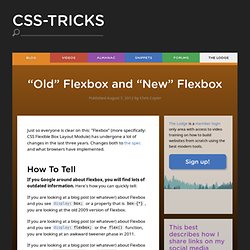
Changes both to the spec and what browsers have implemented. How To Tell If you Google around about Flexbox, you will find lots of outdated information. Here's how you can quickly tell: If you are looking at a blog post (or whatever) about Flexbox and you see display: box; or a property that is box-{*}, you are looking at the old 2009 version of Flexbox. If you are looking at a blog post (or whatever) about Flexbox and you see display: flexbox; or the flex() function, you are looking at an awkward tweener phase in 2011. Dive into Flexbox. Introduction Flexbox is a new layout mode in CSS3 that is designed for the more sophisticated needs of the modern web.
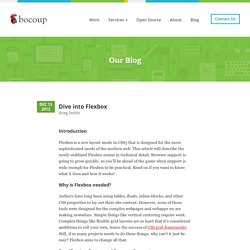
This article will describe the newly-stablized Flexbox syntax in technical detail. Browser support is going to grow quickly, so you’ll be ahead of the game when support is wide enough for Flexbox to be practical. Read on if you want to know what it does and how it works! Why is Flexbox needed? Authors have long been using tables, floats, inline-blocks, and other CSS properties to lay out their site content. Specification Status and Browser Support The Flexbox specification has been a work in progress for over 3 years. Learn CSS Layout. Drive.
Readable CSS - Web developer guide. Go to Previous Section:SelectorsThis is the 6th section of the CSS Getting Started tutorial; it discusses the style and grammar of the CSS language itself.
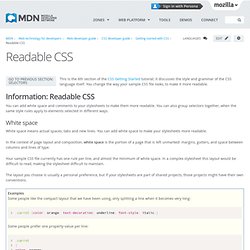
You change the way your sample CSS file looks, to make it more readable. Information: Readable CSS You can add white space and comments to your stylesheets to make them more readable. You can also group selectors together, when the same style rules apply to elements selected in different ways. White space White space means actual spaces, tabs and new lines. In the context of page layout and composition, white space is the portion of a page that is left unmarked: margins, gutters, and space between columns and lines of type. Your sample CSS file currently has one rule per line, and almost the minimum of white space. The layout you choose is usually a personal preference, but if your stylesheets are part of shared projects, those projects might have their own conventions.
Examples Some people prefer one property-value per line: Example. ColorPicker.com : Quick Online Color Picker Tool. Border. CSS Border, our personal favorite CSS attribute, allow you to completely customize the borders that appear around HTML elements.
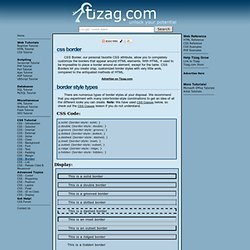
With HTML, it used to be impossible to place a border around an element, except for the table. CSS Borders let you create crisp, customized border styles with very little work, compared to the antiquated methods of HTML. There are numerous types of border styles at your disposal. We recommend that you experiment with many color/border-style combinations to get an idea of all the different looks you can create. Hover.css - A collection of CSS3 powered hover effects. All Hover.css effects make use of a single element (with the help of some pseudo-elements where necessary), are self contained so you can easily copy and paste them, and come in CSS, Sass, and LESS flavours.
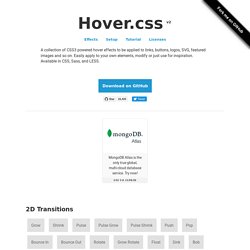
Many effects use CSS3 features such as transitions, transforms and animations. Old browsers that don't support these features may need some extra attention to be certain a fallback hover effect is still in place. Licenses Hover.css is made available under a free personal/open source or paid commercial licenses depending on your requirements. To compare licenses please visit the Ian Lunn Design Limited Store and purchase a commercial license. Personal/Open Source For personal/open source use, Hover.css is made available under a MIT license: Use in unlimited personal applications Your application can't be sold Your modifications remain open-source Free updates Read full license Commercial Commercial License Purchase | Read full license Extended Commercial License.
Mastering CSS Coding: Getting Started. Advertisement CSS has become the standard for building websites in today’s industry.
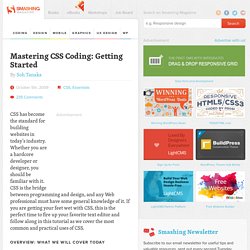
Whether you are a hardcore developer or designer, you should be familiar with it. CSS is the bridge between programming and design, and any Web professional must have some general knowledge of it. If you are getting your feet wet with CSS, this is the perfect time to fire up your favorite text editor and follow along in this tutorial as we cover the most common and practical uses of CSS. Overview: What We Will Cover Today We’ll start with what you could call the fundamental properties and capabilities of CSS, ones that we commonly use to build CSS-based websites: Once you are comfortable with the basics, we will kick it up a notch with some neat tricks to build your CSS website from scratch and make some enhancements to it. 1. Most beginners get padding11 and margins12 mixed up and use them incorrectly. What Is Padding and Margin? Take a look at the visual below: Margin and Padding Values Quick Tip 2. CSS Text.